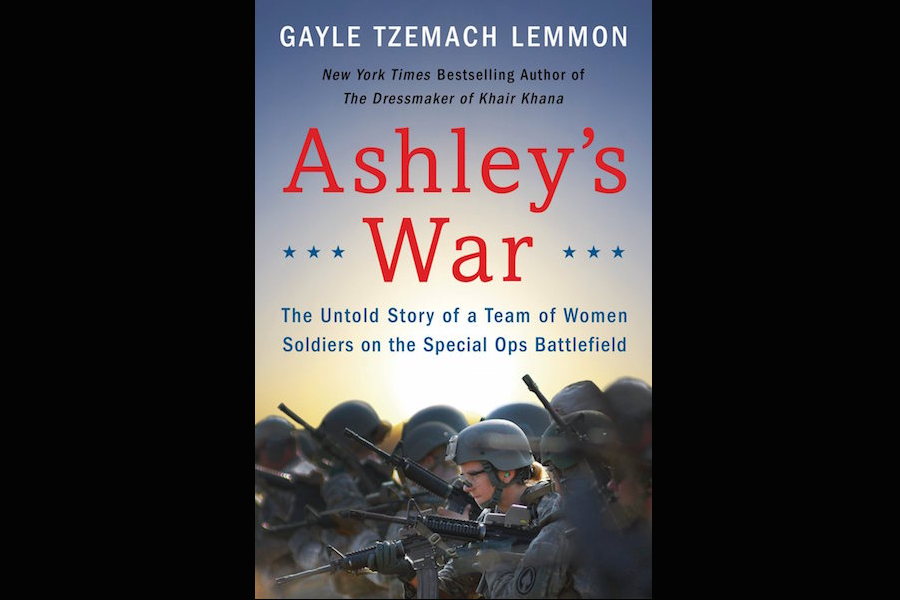'Ashley's War' shares the untold stories of women in combat
Loading...
In the middle of Assessment and Selection – a brutal test of strength and endurance referred to as “100 Hours of Hell” – the women sat defeated. Until the unlikely wisdom of porta-potty graffiti changed everything.
“The mind is its own place. And itself can make a hell of heaven and a heaven of hell. Don’t quit.”
Ashley’s War: The Untold Story of a Team of Women Soldiers on the Special Ops Battlefield, the second book written by bestselling author Gayle Tzemach Lemmon (“The Dressmaker of Khair Khana”), quietly grips the reader with the untold story of a small group of women selected to serve in combat alongside the US’s best soldiers: Army Rangers, Navy SEALs, and Green Berets. As the women fight – not just the war but also to prove themselves as fit for the battlefield – we see just how powerful their minds can be.
The US Army Special Operations Command developed the Cultural Support Teams (CST) in 2010 to better fight the war in Afghanistan. Male soldiers were often unable to carry out missions and reach one of the largest populations in Afghan cultures: the women. The conservative country kept women out of soldiers’ reach – which meant that at least fifty percent of the people they needed intelligence from were off limits, an obstacle that increased the chances of insurgents' being able to slip beneath the radar.
Enter the CST: the strongest, fittest women in the armed forces with a passion for their country and a desire to serve in the front lines of war. Lemmon spends much of the time introducing the women who fought through the incredible selection process to earn a place besides America’s special operations teams. Lemmon explains: “Their job was to be the softer side of the hardest side of war.”
As the story unfolds, we first meet First Lieutenant Ashley White, a young Midwesterner in her early 20s with a strong desire to join men on the battlefield. She responds to the call of a flyer to “become a part of history,” and decides to try for a place on the pilot CST program.
As Lemmon tells Ashley’s story, we meet other brave, resilient women who soon form a sisterhood within the armed forces. Early on, Lemmon throws a cluster of names at the reader, and at first it can be difficult to sort out who is who and how they relate to others. However, as the story progresses, a few women emerge as strong characters. Their stories – and the trials they must endure – are all compelling.
Twenty-three-year-old Lane Mason was driven to CST in an effort to redeem her military experience after being raped by a fellow soldier. Fiery Amber Treadmont, a 28-year-old from South Carolina, displays bravado and then some as she challenges a fellow male soldier to a push-up contest to prove he cannot match her fitness level. Leda Reston, a senior in the program, refuses to react after she breaks her leg while attempting to fast rope. As these women pile into someone's room to eat Thai food and watch "G.I. Jane," you cannot help but feel the connection and sense of family that is developing among them.
Their fears, excitement, and determination draw the reader in, and as the book progresses it's almost easy to forget that the women will – and eventually do – deploy to fight a dangerous war deep in Taliban territory.
When they finally reach combat, "Ashley's War" succeeds in showing a different side of war: what it looks like with women on the battlefield. While the women are technically banned from fighting, they accompany special operation forces on night raids, often encountering gunfire, IEDs (improvised explosive devices), and dangerous insurgents. You feel the tension as the women prepare for this experience: What happens when you put dozens of military women in the same room? How will women perform when expected to carry injured comrades off the field? Will the men embrace the CST soldiers as their own, or is it simply not possible for men and women to coexist in battle?
Lemmon answers these questions through rich storytelling, investigating and dissecting the experiences of women who have gone to war and survived. She sprinkles enough lighthearted anecdotes throughout to provide a reprieve from typical war zone literature, sometimes softening the realities of injuries, death, and trauma facing all of the soldiers on a regular basis.
The book is an engaging read, from beginning to end. Lemmon's writing can be surprising, gently revealing biases that readers may not have known that they had. Until the very end the story remains unpredictable, with the characters subtly developing and growing in complexity until they no longer feel like characters. It remains clear throughout the book that these are the stories of real women, experiencing real challenges that brought them to a real war.
"Ashley’s War" is not just about women working alongside men in Afghanistan. Yes, it is a book about war, but more than that it becomes a book that challenges what you think you know about war as you witness it through the eyes of those who have never been. In battle as in life, these women refuse to quit. As they struggle to create heaven out of hell, their story challenges the rest of us to do the same.






